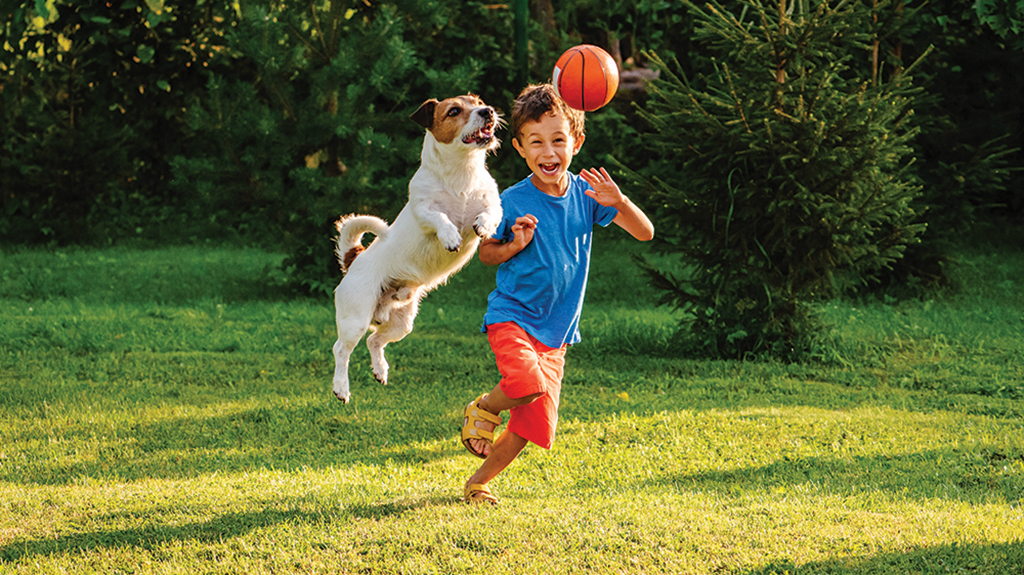Pets are cherished members of our families, bringing joy, companionship, and unconditional love into our lives. While we often focus on their physical health—ensuring they receive the proper nutrition, regular veterinary care, and adequate exercise—it’s equally important to consider their mental well-being. Just like humans, pets can experience stress, boredom, anxiety, and depression. Understanding the importance of pet mental health and providing activities and toys to keep them engaged is crucial for their overall happiness and quality of life.
Why Pet Mental Health Matters
Mental health in pets is vital for several reasons. A mentally healthy pet is more likely to exhibit positive behavior, have a better immune system, and live a longer, happier life. Conversely, pets that lack mental stimulation can develop various behavioral issues such as aggression, excessive barking, destructive chewing, and even depression.
Signs of Poor Mental Health in Pets
Recognizing the signs of poor mental health in pets is the first step toward addressing the issue. Common indicators include:
- Changes in Appetite: A sudden increase or decrease in food intake can signal stress or anxiety.
- Lethargy or Excessive Sleeping: Pets that are not mentally stimulated may become inactive or sleep more than usual.
- Destructive Behavior: Chewing on furniture, shoes, or other items can be a sign of boredom or anxiety.
- Aggression or Irritability: Unexplained aggression towards people or other animals can indicate mental distress.
- Repetitive Behaviors: Pets may develop compulsive habits such as pacing, licking, or biting themselves.
Activities to Keep Pets Mentally Stimulated
Providing a variety of activities can help keep your pet mentally engaged and happy. Here are some suggestions for different types of pets:
For Dogs
- Interactive Playtime: Games like fetch, tug-of-war, and hide-and-seek can stimulate your dog’s mind and body.
- Training Sessions: Teaching your dog new tricks or commands keeps their brain active and reinforces positive behavior.
- Puzzle Toys: Toys that dispense treats when manipulated, like Kong toys or puzzle feeders, challenge dogs to think and problem-solve.
- Socialization: Regular interaction with other dogs and people helps prevent anxiety and promotes mental well-being.
- Scent Work: Hiding treats around the house or yard for your dog to find can engage their powerful sense of smell and provide mental stimulation.
For Cats
- Interactive Toys: Toys that mimic prey, such as feather wands or laser pointers, stimulate a cat’s hunting instincts.
- Climbing Structures: Cat trees, shelves, and perches allow cats to climb and explore, which is mentally and physically enriching.
- Food Puzzles: Puzzle feeders and treat-dispensing toys encourage cats to work for their food, engaging their problem-solving skills.
- Environmental Enrichment: Providing a variety of scratching posts, hiding spots, and window perches can keep cats entertained and curious.
- Play Sessions: Regular playtime with toys that move unpredictably can keep a cat’s mind sharp and prevent boredom.
For Small Pets (Rabbits, Guinea Pigs, Hamsters)
- Enrichment Toys: Items like tunnels, chew toys, and cardboard boxes can provide hours of entertainment for small pets.
- Foraging Activities: Hide treats in their bedding or in treat-dispensing toys to encourage natural foraging behavior.
- Interactive Play: Supervised time outside their cage in a safe, enclosed area can provide mental and physical stimulation.
- Social Interaction: Regular handling and interaction with their human caretakers or other compatible pets can prevent loneliness and boredom.
- Varied Environment: Regularly changing the layout of their enclosure or introducing new toys can keep small pets mentally engaged.
The Role of Toys in Pet Mental Health
Toys are not just accessories; they are essential tools for mental stimulation and overall well-being. The right toys can provide numerous benefits:
- Cognitive Development: Puzzle toys and interactive games challenge pets to think and solve problems, which enhances their cognitive abilities.
- Physical Exercise: Many toys encourage physical activity, which is closely linked to mental health. A tired pet is often a happy pet.
- Behavioral Improvement: Toys can redirect negative behaviors, such as chewing on furniture, by providing appropriate outlets for natural instincts.
- Emotional Fulfillment: Engaging toys can alleviate anxiety and prevent boredom, contributing to a pet’s emotional well-being.
Choosing the Right Toys
Selecting the right toys for your pet involves considering their specific needs, preferences, and safety. Here are some tips:
- Size and Durability: Choose toys that are appropriate for your pet’s size and chewing strength to prevent choking hazards or breakage.
- Variety: Provide a mix of toys that cater to different senses and activities, such as chew toys, puzzle feeders, and interactive toys.
- Safety: Avoid toys with small parts that could be swallowed or materials that could splinter and cause injury.
- Interest: Pay attention to your pet’s preferences and rotate toys regularly to maintain their interest and excitement.
Conclusion
Prioritizing your pet’s mental health is essential for their overall well-being. By providing a variety of activities and toys, you can ensure that your pet remains mentally stimulated, happy, and healthy. Remember, a mentally engaged pet is a content and well-behaved companion, enhancing the bond you share and contributing to a fulfilling and joyful life together. So, invest time in understanding and catering to your pet’s mental needs—it’s a vital part of responsible and loving pet ownership.



